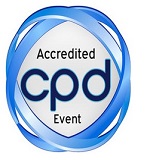
Ekta Rawat
Kurukshetra University, India
Title: Anti-inflammatory and Antimicrobial active macrocyclic complexes of main group metal with their in vitro, in vivo and in silico studies
Biography
Biography: Ekta Rawat
Abstract
Despite the current advancement in drug discovery and pharmaceutical biotechnology, infection diseases induced by microorganisms continue to be one of the greatest health problems worldwide, afflicting millions of people annually. Almost all microorganisms have, in fact, an intrinsic outstanding ability to flout many therapeutic interventions, thanks to their fast and easy-to-occur evolutionary genetic mechanisms. There is an urgent need for alternatives to antibiotics in preventing and treating these infections as a result of increases in drug resistance. The capacity of macrocyclic complexes to destroy infectious micro-organisms makes it one of the most powerful antimicrobial agents and anti-inflammatory agents, an attractive feature against ‘super-bugs’ resistant to antibiotics. A noticeable increase in molecular complexity of drug targets has created an unmet need in the therapeutic agents that are larger than traditional small molecules. Macrocycles, which are cyclic compounds comprising 12 atoms or more, are now recognized as molecules that “are up to the taskâ€. Macrocycles are equipped with large polar surface areas, achieving cellular permeability and bioavailability is anything but straightforward. Perspective of present is to provide an overview of both mechanistic and structural issues that bear on macrocycles as a unique class of molecules. A new series of macrocyclic multidentate ligand and its complexes with main group metal are reported. The mode of bonding and overall geometry of the compounds was determined through physicochemical and spectroscopic methods. These studies revealed octahedral geometries about metal atom. Biological activity of the ligand and its metal complexes against Gram positive bacterial strain and Gram negative bacteria revealed that the metal complexes become more potentially resistive to the microbial activities as compared to the free ligand. These compounds were evaluated for anti-inflammatory activity by carragenan induced paw oedema method. The binding mode of the title compounds has been proposed based on the docking studies.

